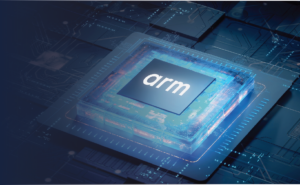
Tom McCarthy
Product Marketing
In a recent AMI blog, “The New Frontier: The Enterprise OCP Model for Returning to On-premises”, we wrote about the GEICO keynote from the 2024 Open Compute Project (OCP) Global Summit and how GEICO was making the transition from a cloud datacenter model to on-premises. Within this model, GEICO leveraged OCP and ODM resources instead of turning to an OEM.
A recent survey by Barclay’s found that 83% of enterprises plan to move their workloads back to the private cloud from the public cloud. The main reason for this move is that today the cloud model has become overly expensive for enterprises and lacks flexibility. As with GEICO, these transitions will not come without challenges. One of the important challenges will be with the flexibility and uniformity of platform firmware.
Common-source and Vendor-supported Applications
As a potential solution, AMI’s Kelly Bryant presented, “Firmware Management for Tomorrow, as Data Centers” at the 2024 OCP Global Summit. In this presentation, Kelly outlined how building firmware from a common-source and using vendor-supported applications can better enable the enterprise transition to on-premise using ODM hardware.
Platform firmware exists everywhere throughout the enterprise datacenter. It can be found where controls are needed for general operations, communication, and system or device management. Examples of firmware applications in a server include system boot firmware, BMC for out-of-band system management, security, communications, and power delivery. Each system in the datacenter provides the necessary firmware to operate within its own configuration profile. In an OEM model uniformity in systems provides for uniformity in firmware configurations. In an ODM model where heterogeneous systems and platform types are supported, and open-source firmware is leveraged, profiles differ.
Figure 1 below shows an example of how different ODM servers and racks are utilized across a datacenter.

Efficiency in the datacenter relies on the ability to have matching firmware profiles with configurations that are optimized for application workloads. Utilizing a purely ODM-based model that leverages open-source firmware such as OpenBMC, Redfish, LinuxBoot, and OpenEDK2 introduces mismatched configurations and ultimately inefficiencies. The inability to optimize intra-system protocols reduces remote processability resulting in application lag. A more obvious issue is where different BMC firmware throughout the datacenter creates configuration complexity, expands software overhead, and complicates administration.
Figure 2 below Illustrates how different system firmware can derive inconsistencies in responses

Net Effect of Common-source Firmware
To overcome the inefficiencies from ODM-based firmware mismatches, enterprise datacenters should turn to common-source firmware with vendor-supported applications. By using common-source firmware with ODM Hardware, enterprise datacenters are given complete control over their infrastructure. Configurable for enterprise workloads, common-source firmware delivers uniform and accurate command responses and commonality for integrators. Integration and customization of the common code base enables automation with scaling, streamlines operations, and enhances system management while maintaining compliance and security.
The net effect of using common-source firmware is that inefficient processes are eliminated, and overall operational efficiency is improved. This improvement in efficiency has been stated in an Enterprise Management Associates White Paper, “Optimizing Data Center Efficiency” where it was said that “implementing common firmware across a data center reduces the resource cushion put in place to overcome inefficient processes by around 10-20%.”
Conclusion
To better orchestrate and administer to the datacenter and the system firmware, enterprises can leverage vendor-supported applications that work alongside or with the common-source firmware. By ensuring compatibility with the common-source firmware, these applications simplify the build out process while diminishing administrative tasks. Examples of common-source firmware available through the OCP community include Aptio boot firmware, MegaRAC for BMC, and Tektagon for Hardware Root of Trust. Combined with AMI’s Data Center Manager and AMI’s Meridian cloud firmware management, enterprise datacenters can fill the gaps left by moving from OEM to ODM hardware while optimizing for their workloads.






